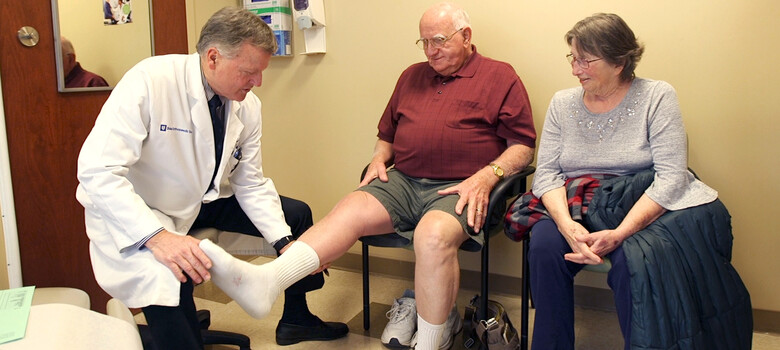Osteoarthritis occurs when the cartilage and other structures in your joints deteriorate and change over time. As your body tries to repair the damage, your joints may become inflamed, leading to pain, stiffness, and loss of motion. The risk of getting osteoarthritis increases as you age, but obesity, a family history of osteoarthritis, a previous joint injury, and repetitive stress on the joint are also contributing factors. If you experience joint discomfort that limits your ability to be active, it is time to see a provider.
Osteoarthritis
If you have pain and stiffness in your knees, hips, hands, or other joints that interfere with your daily activities, you could have osteoarthritis. Although the condition can’t be cured, a variety of nonsurgical treatments are available to help you manage your pain, improve your mobility, and slow the progression of arthritis so you can get back to enjoying life.
When to See a Doctor for Osteoarthritis
Duke Health offers locations throughout the Triangle. Find one near you.
Diagnosing Osteoarthritis
Osteoarthritis can affect any joint, including the spine, but is most common in the knees, hands, and hips. It is usually diagnosed through a physical exam of your joints, and X-rays may be used to confirm the diagnosis and rule out other causes of your symptoms. However, the amount of joint damage seen on an X-ray does not necessarily indicate how much osteoarthritis will affect you. Many people with severe joint damage can function with little to no pain. If left untreated, osteoarthritis can increase your risk of falls and other complications. Early diagnosis is important because it allows you to start treatment sooner, which can help relieve your symptoms and improve your quality of life.
Where you receive your care matters. Duke University Hospital is proud of our team and the exceptional care they provide. They are why our orthopaedics program is nationally ranked, and the highest-ranked program in North Carolina, according to U.S. News & World Report for 2024–2025.

